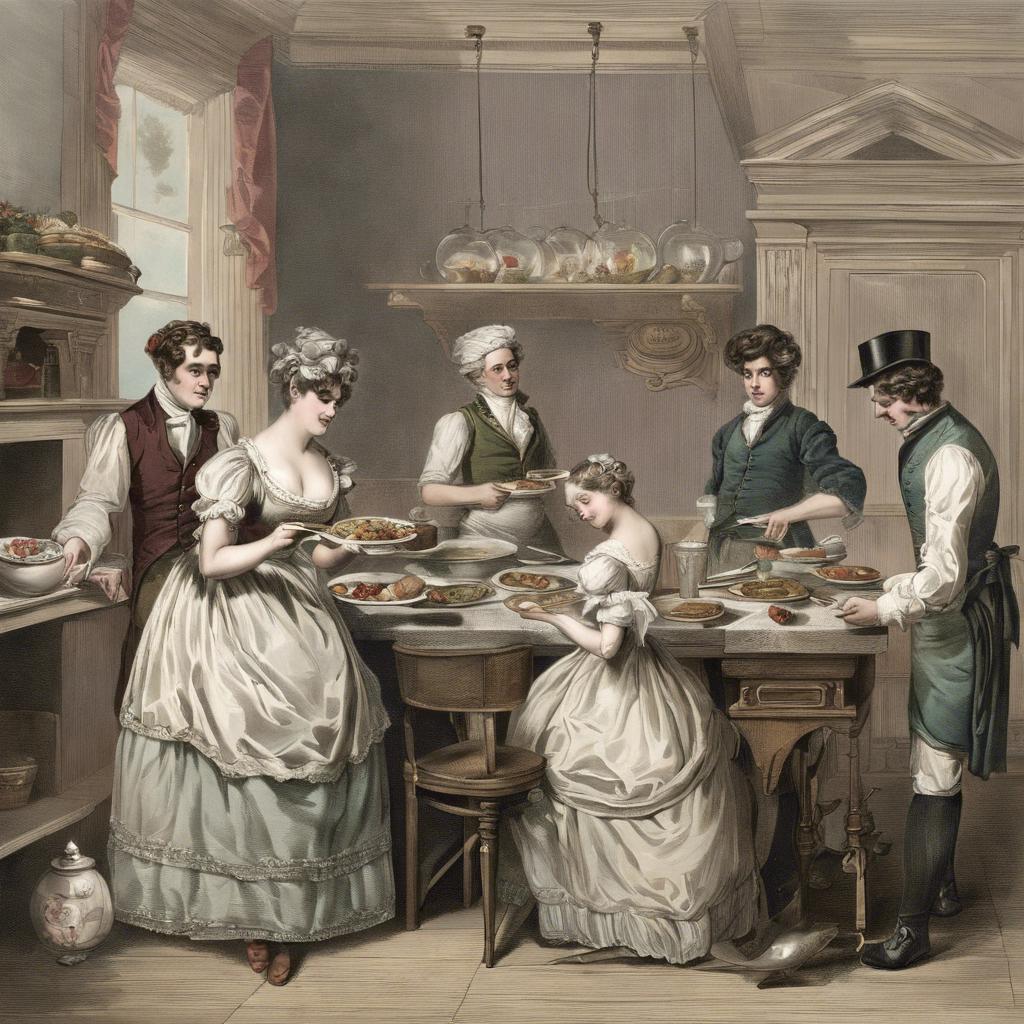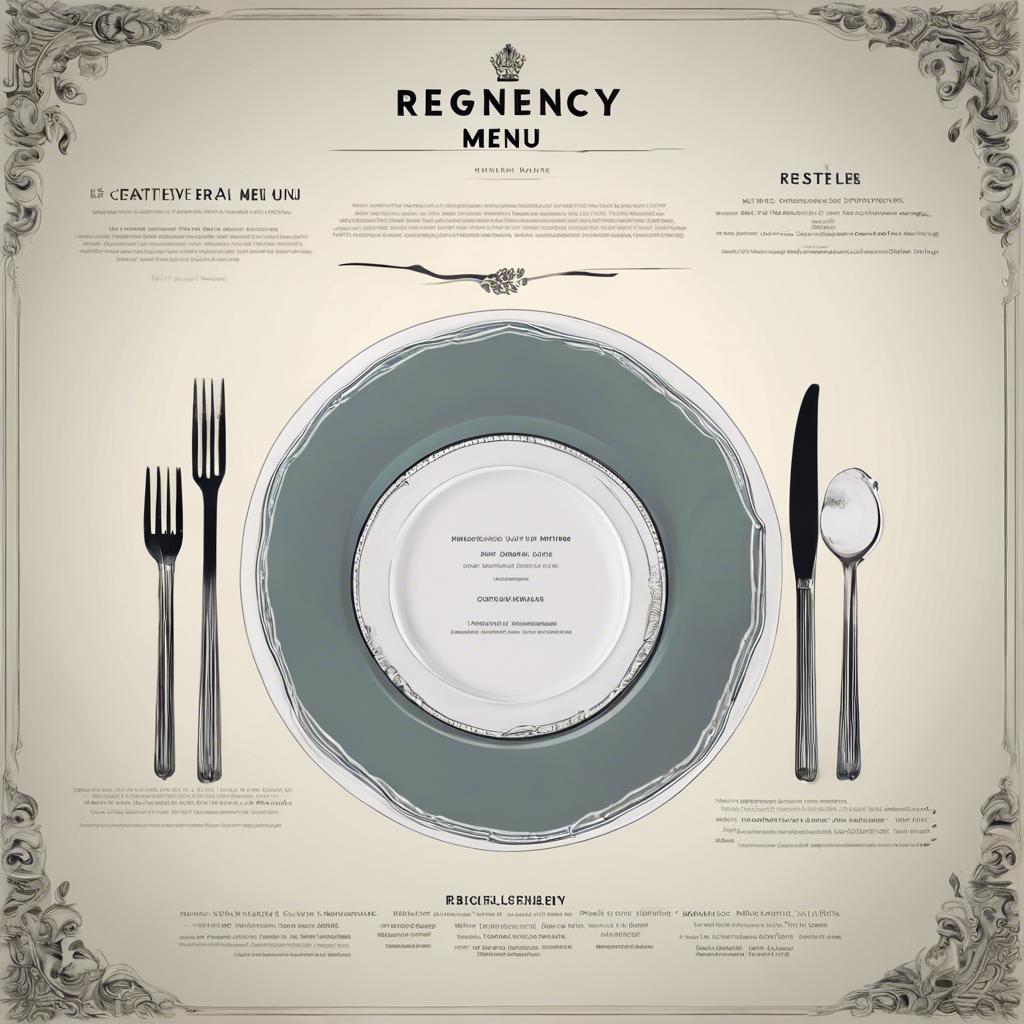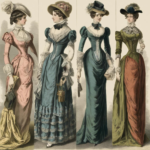In the elegant and refined world of Regency-era England, dining was not just a necessity but a ceremonious affair steeped in tradition and sophistication. The regency era rules”>dinner table was a stage for showcasing one’s wealth, taste, and social status, with elaborate menus carefully curated to impress and delight guests. Join us as we explore the sumptuous world of Regency-era dinner menus, offering a glimpse into the culinary delights and etiquette of this bygone era.
Step Into the World of Cheryl Bolen
Dive into the enchanting stories of love, intrigue, and elegance set in the Regency Era. Cheryl Bolen's novels offer timeless romance and captivating tales that will leave you wanting more.
Explore Cheryl Bolen's Books Now
A Glimpse into Regency Era Gastronomy
During the Regency Era, dinner parties were a significant social event, with elaborate menus showcasing the culinary delights of the time. A typical Regency Era dinner menu would consist of multiple courses, each carefully planned and executed to impress guests with both taste and presentation.
The first course, known as the “first service,” often featured a variety of soups and cold dishes to whet the appetites of the diners. This course would include delicacies such as clear turtle soup, lobster bisque, jellied veal, and pâtés of various meats.
The main course, or “second service,” was the highlight of the meal and typically included a selection of meats, fish, and poultry dishes. Roast beef, roasted game birds, salmon, and oyster stew were common offerings. Side dishes like asparagus, artichokes, and mushrooms accompanied the main proteins, creating a truly lavish dining experience.
Elegant Courses and Intricate Culinary Techniques
For a taste of elegance from the regency era, indulge in a sophisticated dinner menu that showcases intricate culinary techniques. Step back in time and experience the fine dining of the early 19th century with a carefully curated selection of dishes that were popular during this period.
Start your meal with a delicate Consommé Turenne, a clear broth made from beef, chicken, and vegetables, perfectly clarified to achieve a crystal-clear consistency. Follow this with a Roast Saddle of Lamb, expertly prepared and served with a rich mint sauce to enhance the flavors of the tender meat.
For a truly indulgent finish to your meal, savor a Charlotte Russe, a decadent dessert made with ladyfingers and Bavarian cream, delicately flavored with vanilla and set in a mold for an impressive presentation. Pair this exquisite dessert with a glass of fine Chateau Lafite Rothschild to complete your regency era dining experience in style.
Recommended Dishes to Recreate the Regency Dining Experience
Transport yourself back to the Regency era with a delicious and authentic dinner menu that will recreate the dining experience of the time. Here are some recommended dishes that were popular during this period:
- Roast Beef: A classic dish that was a staple on the Regency dining table. Roast beef was often served with gravy and accompanied by roasted vegetables.
- Pigeon Pie: Another popular dish from the Regency era, pigeon pie was made with succulent pigeon meat, herbs, and a flaky pastry crust.
- Trifle: For dessert, indulge in a decadent trifle made with layers of sponge cake, fruit, custard, and whipped cream. A sweet treat to end your Regency dinner on a high note.
Complete your Regency era dinner menu with a selection of fine wines, such as claret or Madeira, to complement your meal. Sit down to dine in true Regency style and savor the flavors of the past with these recommended dishes. Recreate a historical dining experience in the comfort of your own home with this delicious menu.
Pairing Wines and Beverages for an Authentic Regency Feast
For an authentic Regency feast, it is essential to carefully pair wines and beverages that complement the flavors of the dishes served during this era. The Regency period, spanning from 1811 to 1820, was known for its elegant and extravagant dining experiences. To create a truly immersive dining experience, we have curated a selection of wines and beverages that will transport you back in time to the lavish dinner parties of the Regency era.
When it comes to pairing wines with Regency dishes, it is important to consider the rich and flavorful nature of the cuisine. For hearty meat dishes such as roasted venison or beef Wellington, a bold and robust red wine such as a Bordeaux or Cabernet Sauvignon would be an excellent choice. For lighter fare such as seafood dishes or delicate pastries, a crisp and refreshing white wine like a Chardonnay or Sauvignon Blanc would be the perfect accompaniment.
In addition to wines, the Regency era also featured a variety of beverages that were popular among the upper class. Champagne was a favorite choice for toasting special occasions, while port and sherry were often served as after-dinner drinks. For a true taste of the Regency era, consider serving a selection of these classic beverages alongside your meticulously prepared Regency feast.
The Conclusion
the Regency Era dinner menu was a reflection of the sophistication and opulence of the time. The meticulous planning and attention to detail that went into crafting these elaborate meals showcase the culinary expertise of the era. From delicate soups to indulgent roasts and decadent desserts, each course was a testament to the refined tastes and social customs of the Regency period. As we look back on these historical dining traditions, we are reminded of the enduring legacy of Regency cuisine and its significance in shaping modern culinary practices. The next time you sit down to dine, take a moment to appreciate the culinary artistry of the Regency Era and savor the flavors of a bygone era.


